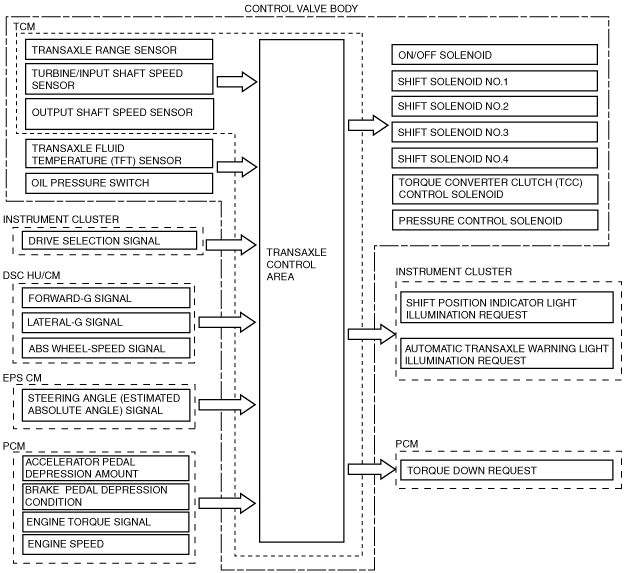• The TCM implements auto shift control according to the vehicle speed and accelerator pedal depression amount while in D position.
• When the vehicle is stopped with the selector lever is in the D position and the brake pedal depressed, the neutral idle control is performed which internally controls the automatic transaxle to be in the neutral condition while the selector lever is in the D position. When the brake pedal is being released, the clutch is engaged immediately and the automatic transaxle returns to the normal D position condition.
• When SPORT mode is selected using the drive selection switch, a lower gear relative to normal mode is selected, and control is performed so that a higher operating force can be assured.
• When implementing the automatic shift control, the TCM determines the driving conditions based on each input signal and selects the drive mode appropriate to the driving conditions. In addition, information such as torque and gear changes is exchanged via PCM and CAN communication and control is performed so as to achieve optimum drive force according to the driving scenario.
